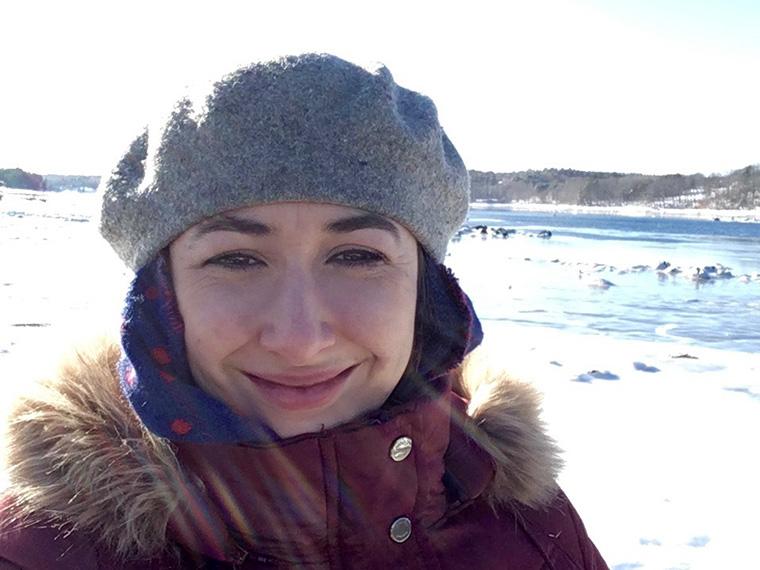Bringing Science to Life Through Journalism
June 19, 2018
Hillary Hempstead

Photo credit: Dyani Sabin
A love of the sciences, paired with a stint at Oberlin College Library, led Dyani Sabin to a career in science journalism.
When Dyani Sabin ’14 began at Oberlin, she was almost certain of her future career, and aspirations of becoming a veterinarian placed her on the premed track.
But during the premed information session meeting at Orientation, Sabin was confronted with a difficult truth. The already defined roadmap of classes that prepare students for medical school didn’t quite fit the picture of what she imagined for her liberal arts college experience. Sabin wanted the latitude to explore a variety of topics and take diverse classes.
“I knew that I craved broad experiences,” says Sabin. “So when I learned that a predefined set of classes was what was required to [be premed], I opted out.”
Instead, Sabin found her home in the biology department. One of the first courses she took was Biology 101, to which she attributes her love of the field and eventually becoming a biology major. During her time at Oberlin, Sabin worked in various labs and conducted research with Associate Professor of Biology Angie Roles for a project studying crayfish.
“As soon as I entered her lab, it all just clicked for me. I got to work with Professor Roles for years doing research, but also while exploring the things I wanted at Oberlin—such as taking a class about ancient Olympics.”
Following Sabin’s senior year, the Oberlin native took a gap year and worked as a night supervisor in the main library while contemplating her next move. At the library, she discovered science journalism—a pursuit that combined both her love of science and a broad range of topics—so she decided to apply for the master’s program in Science, Health, and Environmental reporting at New York University.
After graduating from the program, Sabin worked for several publications, including Scientific American and at Inverse, an online science and technology media company. While reporting, she covered such topics as an electric car race in Brooklyn’s Red Hook neighborhood and the logistics of how autonomous cars are tested at a transportation research facility outside of Columbus, Ohio.
“The best thing about science journalism is that I get to have a breadth of experiences,” says Sabin. “And I get to go places where others aren’t allowed to go [and do] once in a lifetime things.”
Sabin enjoys her work in journalism and she doesn’t see that changing any time soon.
“I love science journalism. But I also think it’s a very hard time to be a science journalist—or a journalist in general. But right now I’m not ready to leave. I want to make this into a career that I can do, even if it has to be supplemented with other work.”
You may also like…
Josh Nolan Named Vice President, General Counsel, and Secretary at Oberlin
Distinguished attorney brings extensive experience in higher education law.
Learning by Teaching: Oberlin Students Share Global Music with Young Learners
College and Conservatory students in PACE 103 prepare local children for an immersive community concert at Oberlin.
Nuiko Wadden ’02 Joins Oberlin Conservatory Faculty as Assistant Professor of Harp
The versatile musician brings extensive opera, orchestral, and contemporary music experience to her role


